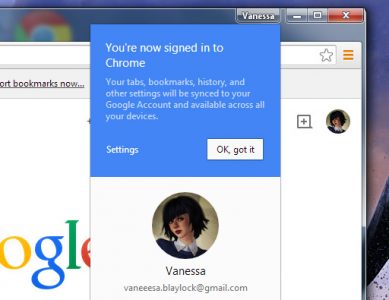Version 39.0.2171.99 m
I recently upgraded from Google Chrome v38 to v39, and with it came improvements to Chrome’s already great support for multiple identities.
Background
Ever since they fired their Chief Witch Hunter and Google+ Product Manager Vic Gundotra in April ’14, Google Inc. has become a lot more friendly toward our kind (avatars, pseudonymous identities).
After firing Gundotra Google didn’t quite apologize for creating the Nymwars and waging 3 years of destructive war against their users, but they did say of their former “Real Names Policy,”
Never mind.
Not quite an apology, still, a way to move forward. And at this point, a lot more inclusive, tolerant, and diversity celebrating than F******k.
Facilitating Transmedia Identities
Last year, Isabella Medici wrote a great post about Facilitating Alternate Identities for transmedia projects like Christa Forster’s 1850 Charla project. One of her key ideas was that if you have 2 or more identities to “support,” say “Vanessa Blaylock” and “Sporty Avatar,” then using multiple web browsers is an easy, but powerful way to keep all the webs you’re weaving organized.
With a single browser, your multiple identities would have to be logging in and out of Flickr, Twitter, WordPress, etc. Crazy! But if Vanessa uses, eg, Firefox, then why not download a copy of Opera for Sporty to use. There are lots of different web browsers available! This way Vanessa can be logged in to LinkedIn or Gmail on Firefox, and Sporty can be logged in to her own Gmail account without anyone having to log out.
Isabella noted that in addition to downloading lots of different browsers, like Comodo Dragon or Pale Moon, that Sea Monkey and Google Chrome were both quite nice for facilitating multiple identities right in the one browser. Sea Monkey handles this very nicely, but it does require you to quit the browser, and relaunch into the new, or alternate identity’s “partition.” What’s cool about Google Chrome is that you can have multiple identities running in their own instances of the browser at the same time. The way this worked in Google Chrome v38 was pretty cool. Now in v39 it’s even better… behold:
Simultaneous Instances Of (identities with) Google Chrome v39
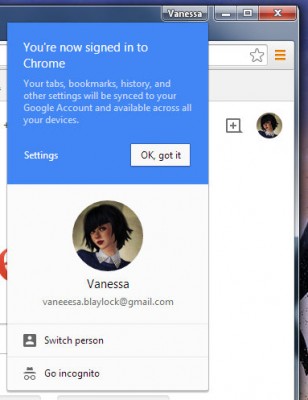
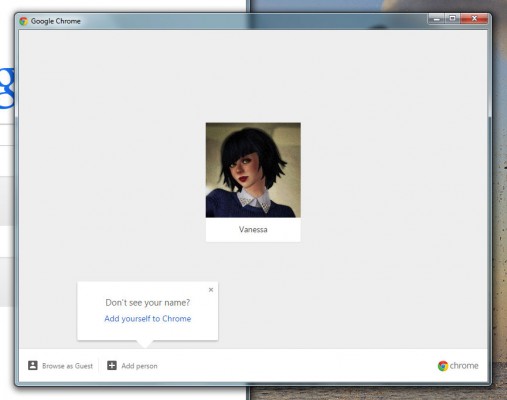
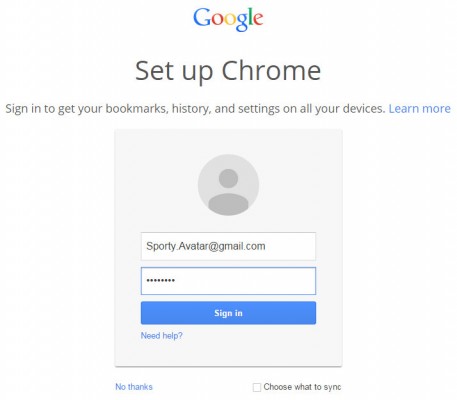

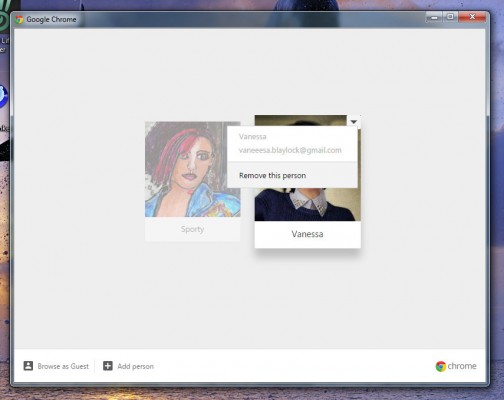
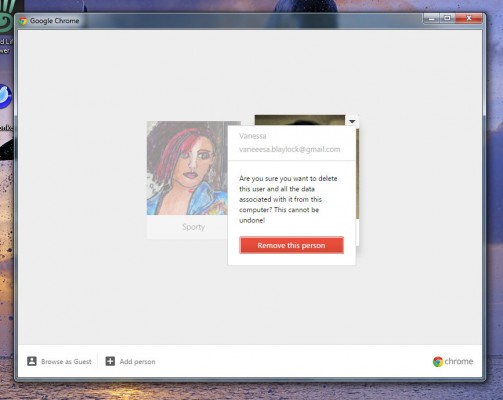
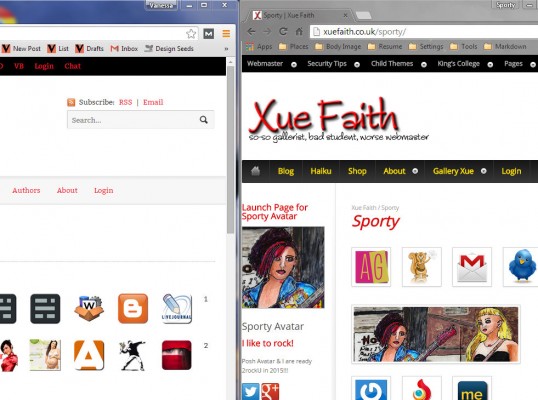

Chrome’s “Guest Mode” vs “Incognito”
From the perspective of someone who might have a fleshvatar and one or more avatar identities to support, the real power of Chrome 39 is in the super-convenient “Switch Person” feature. But in addition to established identities, Chrome also offers Guest Mode and Incognito for short term access.
If I understand them correctly, Incognito is when You want to go online, but want to be less tracked. Guest Mode is when someone else wants to use your computer.
Both Guest mode and Incognito mode are temporary browsing modes, but there are some basic differences between them.
Guest mode: A user in Guest mode does not leave any browsing history or cookies on the computer. In addition, they can’t see or modify the computer owner’s Chrome profile.
Incognito mode: You don’t leave browsing history and cookies on your computer, but you can still see your existing history, bookmarks, passwords, Autofill data, and other Chrome settings.
Important: Neither Incognito mode nor Guest mode makes you invisible on the web. Websites you visit, your employer, or your service provider can still see your browsing activity.
Just In Case: Google Update Group Policy settings
This probably won’t happen to you, but just in case…

As far as I know, Google Chrome on my Win7 desktop has been auto-updating since forever. But it wouldn’t auto, or manually, update from Chrome v38 to v39. I got the error message:
Update failed (error: 7)An error occurred while checking for updates: Google Chrome cannot be updated due to inconsistent Google Update Group Policy settings. Use the Group Policy Editor to set the update policy override for the Google Chrome Binaries application and try again; see https://goo.gl/uJ9gV for details.
Apparently Win7 has over 2,500 “Group Policies” which can be rewritten with the Group Policy Editor (gpedit.msc). But some Windows 7 editions (Home Premium, Home Basic and Starter) don’t come with Group Policy Editor. Only Windows 7 Professional, Enterprise and Ultimate editions come with Group Policy Editor installed.
My Win7 laptop auto-updated from Google Chrome v38 to v39 just fine, which is how I discovered the new Multiple Identity features. IDK what’s different on my Win7 desktop. Editing my Group Policies seemed a little over my head, and IDK what damage patching system files can do, but I didn’t really want to find out. For now I settled for uninstalling Chrome v38 and then installing v39.
This probably won’t happen to you. But just in case it does, there it is. And if you happen to know about fixing my Google Update Group Policy, please do leave a comment below.
Go Forth & Multiple Identify!
That’s it! I can’t guarantee that with multiple instances of Google Chrome v39, or with multiple different browsers, like Opera & Torch, you’ll never accidentally type a comment somewhere from the “wrong” identity – haha, that seems almost inevitable! 😛 But it should cut those mistakes down. And it should make the day-to-day facilitating of your favorite Avatars, Transmedia Characters, Historical Figures, and others, a whole lot easier to manage.
Do you manage more than 1 identity on your computer? How do you manage it? Could Google Chrome v39 help?
